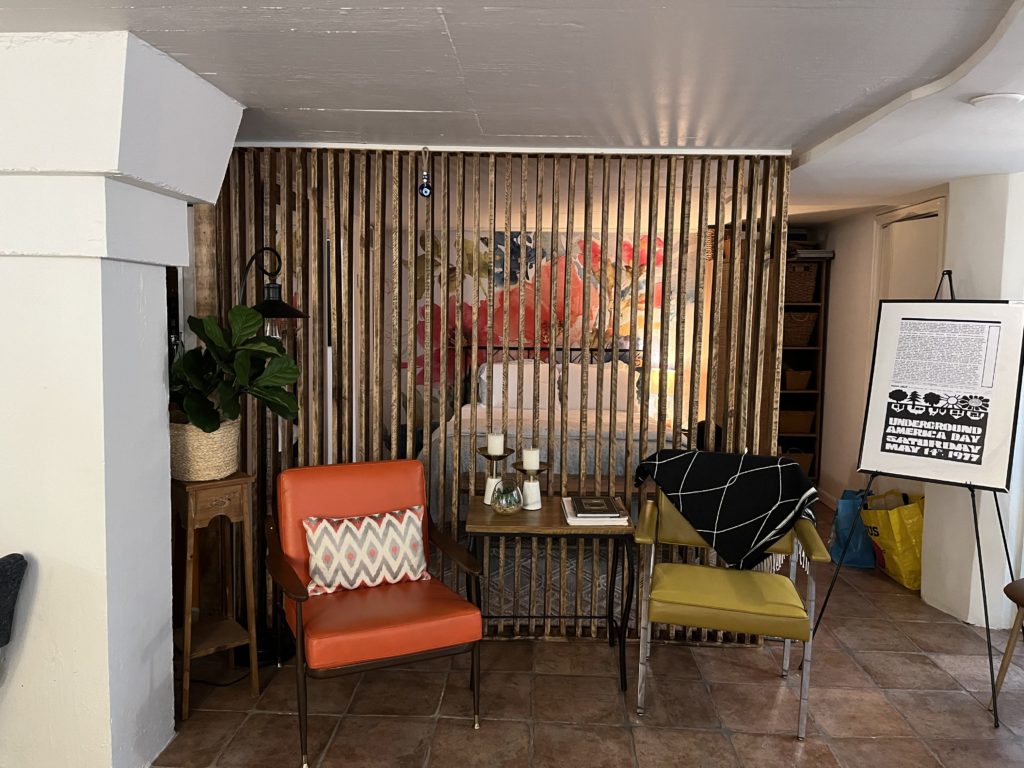
The township historical society hosted a fundraising celebration of National Underground America Day on May 14, at the iconic Cherry Hill office designed by architect Malcolm Wells.
Proceeds will benefit the society and support efforts to restore the important architectural structure used by Wells.
“You don’t feel at all like you’re underground when you’re there,” said the historical society’s Vice President Linda Vizi of Wells’ underground office. “You just feel this kind of intimate space that’s all your own.”
Besides his underground office, Wells designed a former Moorestown municipal complex, the former Cherry Hill library and homes and other structures in the area.
“He was so far ahead of his time,” Vizi noted. “He became an architect in the late 1940s, and he was so innovative and so interesting that the exhibit (the historical society’s “Malcolm Wells: One Man’s Crusade to Save the Environment Through Architecture”) just grew and grew and grew.”
That exhibit commenced last October and ended earlier this month. It all started about a year ago when the township library – which had the architectural model of Moorestown’s old municipal complex – called the historical society to see if it wanted the piece.

“I think people’s reactions … They didn’t feel like they were underground, they were enchanted with the building,” said historical society Vice President Linda Vizi of Malcolm Wells’ underground office.
“Because of the size of the house, we really didn’t have room for it,” Vizi explained. “But then somebody on our board said, ‘Why don’t you take a look at the architect?’ So once we started reading about Malcolm Wells, we were just totally intrigued and called the library back and said, ‘Yes, absolutely we’ll take it.’”
Wells was born in Camden, raised in Haddonfield and lived for some time in Cherry Hill. Often regarded as the father of modern, earth-sheltered architecture, he advocated environmentally responsible design and promoted the idea of building structures at least partly underground, according to the website for AIA-NJ (American Institute of Architects).
Wells’ designs incorporated the land and often burrowed into hillsides, with layers of earth on roofs suitable for gardens or other vegetation. Although the architect never saw his ideas materialize, they influenced the architects who followed him.
“He had all kinds of ideas and designs for interesting projects that were just different …” Vick noted of Wells. ” … He was convinced he wasn’t going to pave any more of New Jersey, he wasn’t going to asphalt any more of New Jersey, so that’s when he started building homes that were buffered by the Earth – and maybe underground – that used passive, solar energy when he could.
“He then started to really make a name for himself,” she added. “He was much influenced by Frank Lloyd Wright, so you’ll see a lot of Wright’s ideas and style in his buildings.”
National Underground America Day celebrates the existence of underground societies, highlighting the diverse and diverse environments beneath the surface, according to wibliqx.com. Wells established National Subterranean America Day in 1974, to bring national attention to the pre-existing concept of subterranean living.
“I think people’s reactions … they didn’t feel like they were underground,” Vizi said of reactions to Wells’ underground office. “They were enchanted with the building. They were like, ‘I’ve lived here so many years and I never knew this was here.’
“I think they were happy it was there.”









